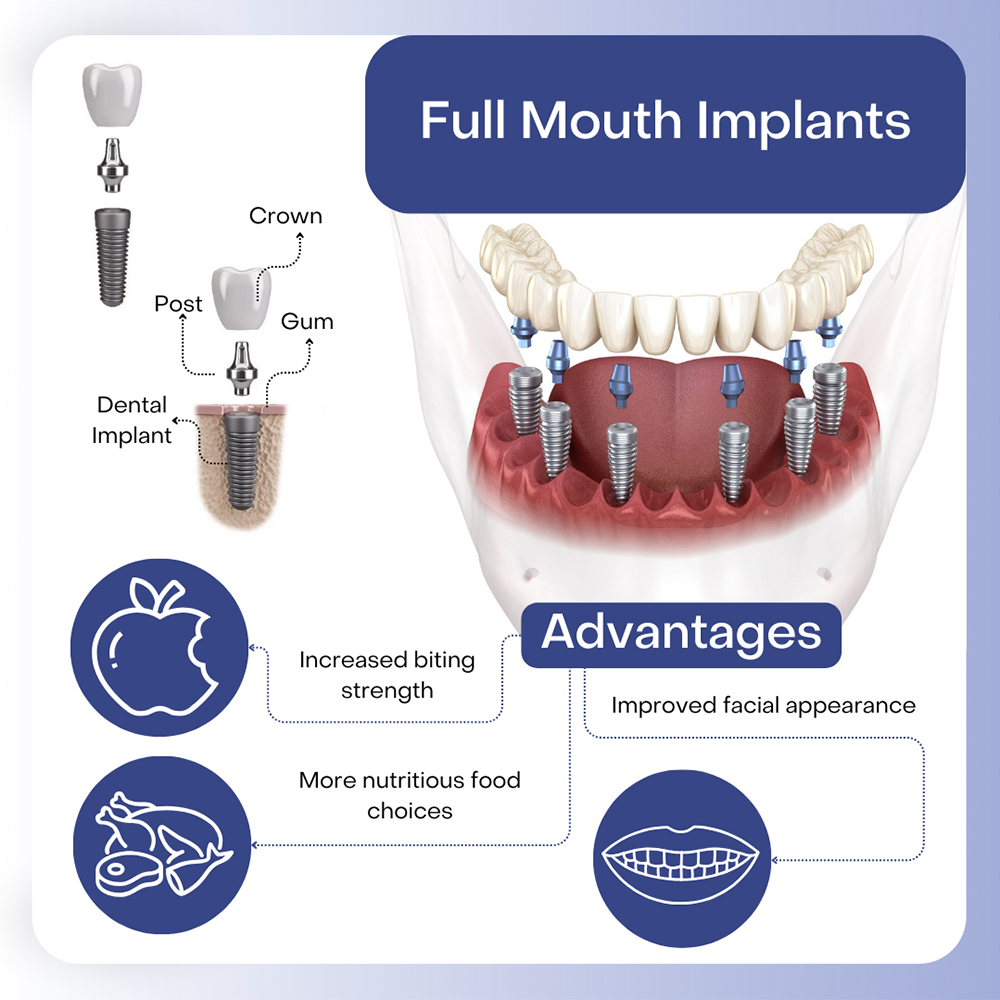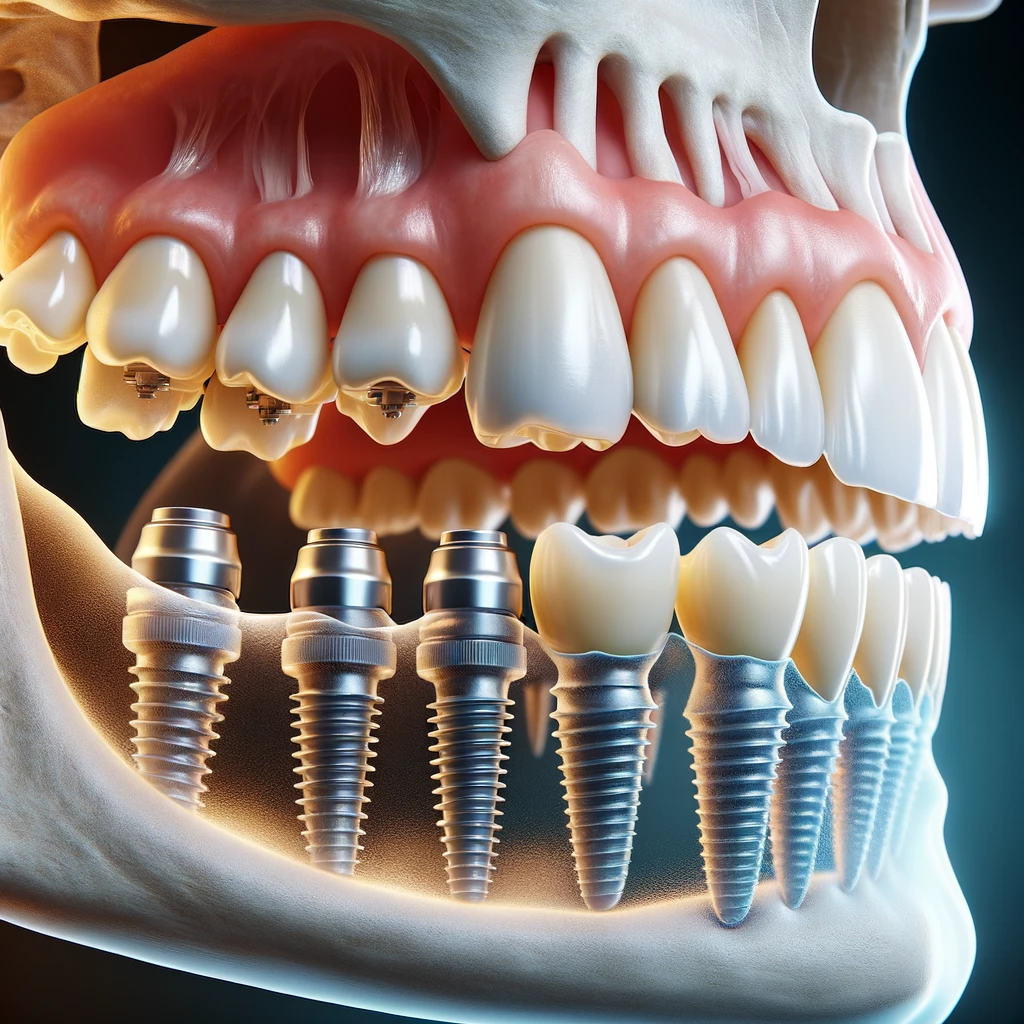The Best Guide To Dental Sense
The Best Guide To Dental Sense
Blog Article
The Greatest Guide To Dental Sense
Table of Contents3 Easy Facts About Dental Sense ExplainedThe Definitive Guide to Dental SenseGetting The Dental Sense To WorkSome Ideas on Dental Sense You Should Know
are medical tools operatively implanted right into the jaw to recover an individual's ability to eat or their look. They supply support for artificial (phony) teeth, such as crowns, bridges, or dentures. When a tooth is shed as a result of injury or illness, a person can experience problems such as fast bone loss, faulty speech, or changes to chewing patterns that lead to discomfort.Oral dental implant systems contain an oral implant body and oral implant joint and may additionally consist of an abutment fixation screw. Professional teeth whitening. The dental implant body is surgically placed in the jawbone instead of the tooth's origin. The dental implant joint is usually affixed to the implant body by the joint addiction screw and prolongs via gum tissues right into the mouth to support the attached synthetic teeth
(https://www.blogtalkradio.com/dentalsense1)Framework of The Oral Implant System selecting dental implants, talk to your dental service provider concerning the prospective advantages and threats, and whether you are a candidate for the procedure. Points to take into consideration: Your total health is an important factor in determining whether you are a good prospect for dental implants, exactly how long it will require to heal, and for how long the implant might remain in area.
Smoking cigarettes may impact the healing procedure and decrease the lasting success of the dental implant. The healing procedure for the implant body may take a number of months or longer, throughout which time you normally have a momentary joint instead of the tooth. the oral implant treatment: Very carefully adhere to the oral hygiene guidelines offered to you by your dental supplier.
Get This Report on Dental Sense
Implant failure can lead to the requirement for another medical procedure to deal with or replace the implant system. Recovers the ability to eat Brings back aesthetic look Assists maintain the jawbone from shrinking because of bone loss Protects the health and wellness of the bordering bone and gum tissues Assists keep adjacent (nearby) teeth secure Boosts top quality of life Damages to bordering natural teeth throughout dental implant placement Injury to the surrounding tissues throughout surgical procedure, such as sinus opening Injury throughout surgical procedure (for instance, fracture of surrounding jawbone) Inadequate feature, such as feeling like the teeth do not attack together normally A feeling that the tooth is loosened or twisting in position arising from an abutment screw loosening Implant body failing (looseness of the dental implant body) because of systemic infection, which might be extra likely in individuals with unrestrained diabetes mellitus as a result of local infection in bone and gums sustaining the dental implant body as a result of postponed recovery, which might be more probable in individuals that smoke Problem cleaning up the gums around the implant, resulting in poor oral hygiene Untreated periodontal disease Post-surgical pins and needles because of nerve impingement or damages Always inform health and wellness treatment companies and imaging specialists that you have dental implants prior to any type of magnetic vibration imaging (MRI) or x-ray procedures.
FDA is not knowledgeable about Full Report any unfavorable occasions reported for MRI or x-ray procedures with dental implants. Oral implants systems are normally made from materials that adhere to worldwide agreement standards of the International Company for Standardization (ISO) or ASTM International. These requirements have details of what makes a risk-free product.

An oral implant is a structure that changes a missing tooth. With screw-like devices, the doctor inserts a dental implant into the jawbone, and it acts as an anchor for a fabricated tooth, called a crown.
Dental Sense for Dummies
Some individuals are not eligible for dental implant surgical treatment. It is for dental surgeons to operate on people with: severe illnessuncontrollable metabolic diseasebone or soft cells condition or infectionIf these problems are solved, an individual can have the surgical treatment. In, dental cosmetic surgeons avoid from operating people with: If individuals with any of the above go through dental implant surgical procedure, there is a higher danger of the dental implant failing.

Oral dental implant surgical procedure is an individualized procedure. It's not the same for everybody. But the adhering to gives a general introduction of what you can anticipate your dental professional, oral surgeon, periodontist or prosthodontist to do: Put the dental implant surgically. Provide you time to recover. Connect the message and final crown, bridge or denture.
Next, your cosmetic surgeon will very carefully place the oral implant right into your jaw. If your dental implant is near the front of your mouth, your dental practitioner will make a short-lived tooth for you to put on up until you recover.
Examine This Report on Dental Sense
Throughout the healing stage, your jawbone ought to fuse to the dental implant. This process can take anywhere from 3 to 9 months.
Once your implant heals, your dental professional can connect the abutment (tiny connector blog post) and your last restoration (crown, bridge or denture). This usually takes about one hour to finish and might require a 2nd small surgery. You shouldn't feel any kind of discomfort during your oral implant procedure due to the fact that your supplier will utilize medicine to numb your gums.
Report this page